Sutherlin, OR–April 18, 2019. This afternoon I spent a short 1 hour 45 minutes around the SE 1/4 of Ford’s Pond. I was there primarily looking for some early emerging Odonates (dragonflies and damselflies) and I was partly successful…and I’ll get back to that…but I was surprised by two things: one was a new denning location for a regular but not-often-seen mammal, and the other was a non-native species I had not seen at Ford’s Pond before.
I had wandered slowly and sinuously west, halfway out the dike between Ford’s and Woodruff ponds, looking for Odes and whatever else, and had wandered back, hitting spots I had not covered on the way out. I ended up at the very east end of the dike, where the Ford’s Pond shoreline begins curving north from the dike. In this area there is a tangle of dead willows–likely killed from sustained high water levels–protruding from the water. As I approached the edge of the bank, I heard several swooshing/sloshing sounds. Something had moved in the water; several somethings. I could see the small waves and the continuing ripples emanating from where the unknown animal had submerged.
As I looked in the area, one of the first things I noticed was a large pile of sticks and limbs: a new beaver lodge! I was familiar with a beaver lodge and small dams on the south side of Woodruff Pond, but I had never seen a beaver lodge in Ford’s Pond itself! That was a pleasant surprise, and it was very easy to view. The approximate location of the lodge is marked on the map below. By the way, if you’re thinking about going out there hoping to see a beaver, be aware that most of the beaver’s activity is probably at night, so count yourself very lucky if you see a beaver (and be aware that large nutria can look something like a beaver while swimming in the water).
Back to those water sounds…. I wondered if perhaps what had made those sounds were large territorial female bass that I had spooked as I approached the bank, or perhaps a beaver or nutria, or even a coot or grebe. I decided to scan with my binoculars to look for little eyes peering out from the water, or the top of a head, and I finally spotted the animal. I had been wrong on my guesses: it was a turtle; multiple turtles. In fact, by the time I left I had seen no less than 10 turtles. Each time I walked to a different part of the bank of the pond, one or two more turtles left their basking spot and plopped or slid into the water. But these were not native turtles, these were Red-eared Sliders (Trachemys scripta elegans), the most common pet store turtle in the United States and perhaps the world.
I have rarely seen turtles of any kind at Ford’s Pond. I seem to recollect at one time finding Western Pond Turtles (Actinemys marmorata) there, but unfortunately don’t find any notes on my past observations. So how did these Red-eared Sliders get here? Well, the most common way for this species to “arrive” at local ponds is that people who once had them as pets, drop them off. This is unfortunate, as they impact native turtles through competition for food and basking sites, among other impacts. For more information, you can start at these websites:
*Oregon Native Turtle Working Group: Turtle Species of Oregon
*ODFW Invasive Species Fact Sheet: Red-eared Slider
I don’t know how long this species has been at Ford’s Pond. It would be instructive if people would share their current and past observations of turtles at Ford’s Pond, and anywhere in the Umpqua Basin for that matter. I recommend submitting observations with photos to iNaturalist.org. You can also report to the Oregon Turtle page. Comments at the end of this blog post are also welcome. Speaking of comments: what do you think should be done regarding the Red-eared Sliders at Ford’s Pond?
Regarding the Odonates I originally sought to find at Ford’s Pond, I found no dragonflies (Order Anisoptera)(there will be a dozen or more species this summer), but I did see several hundred damselflies (Order Zygoptera), most of which were Pacific Forktails (Ischnura cervula), but there were also a small number of Tule Bluets (Enallagma carunculatum), which will also become quite common this spring and summer. Also observed were a Satyr Comma (Polygonia satyrus, a butterfly), and a Western White-ribboned Carpet (Mesoleuca gratulata, a day-flying moth). Photos of each below.
To see more observations and photos from my visit click here.
Go explore Ford’s Pond for yourself!

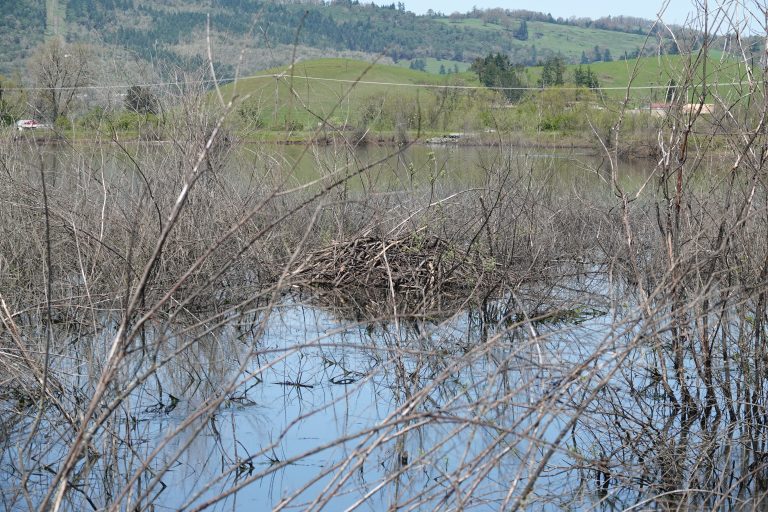
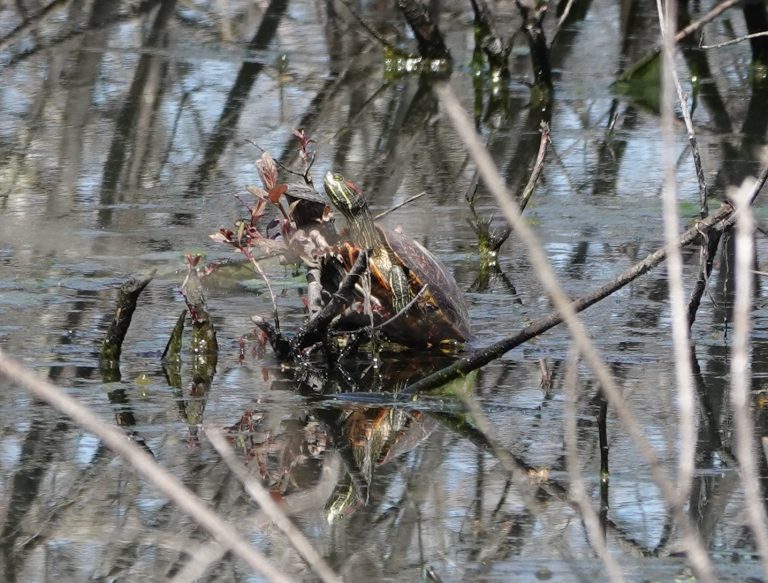

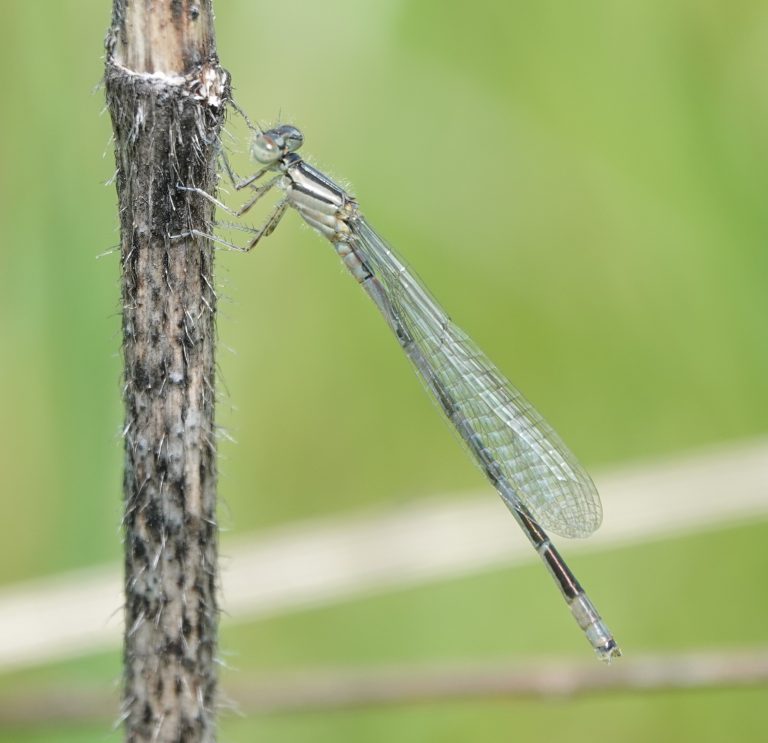
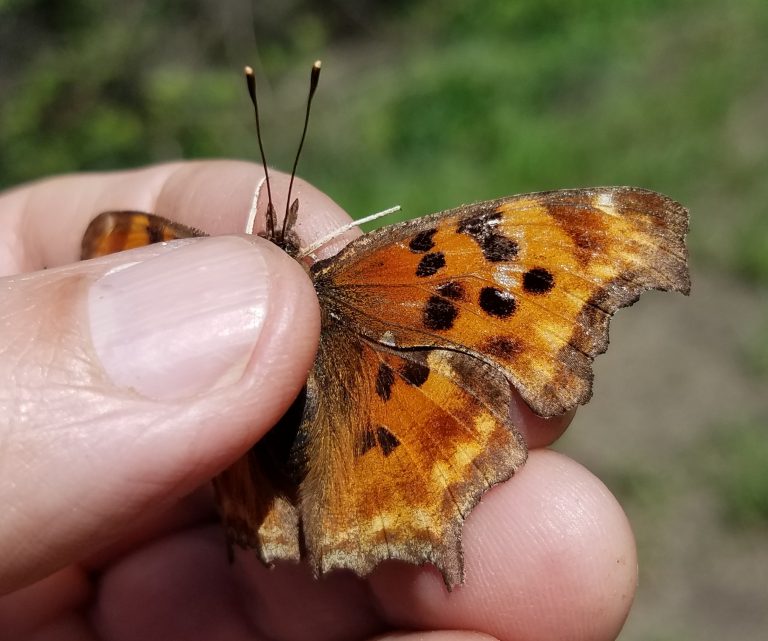
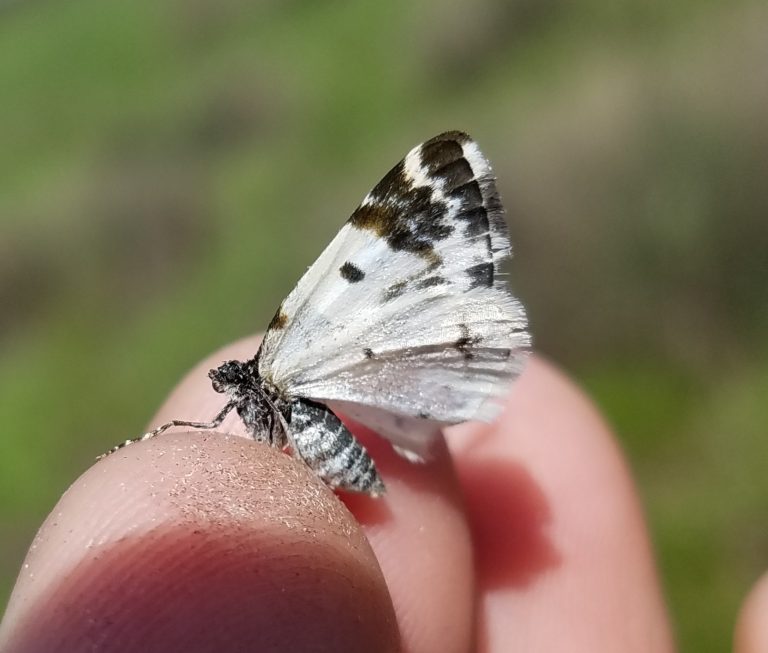
This Post Has 4 Comments
Matt, do you normally see dragonflies or nymphs at the pond at this time of year? Do slider diets include dragonfly eggs or nymphs?
This is the very beginning of the dragonfly season in this area, and primarily only a few species of damselflies are flying right now. However, each week will add flying species and adult (flying) dragonfly numbers will peak about July and August. There are abundant dragonfly and damselfly nymphs in the water/mud/vegetation at Ford’s Pond right now, nearly all of which will emerge as adults between now and mid-summer, and some later in summer and fall. I don’t have much first-hand knowledge of the diet of Red-eared Sliders, but what I have read is that they are omnivorous, with the smaller ones being more carnivorous and larger ones tending to be more herbivorous. I doubt they seek out dragonfly eggs, as they are very small, but would certainly expect them to eat dragonfly nymphs.
Hello Matt,
Very informative post. I was at Ford’s Pond last Tuesday (4/16) and got a very brief look at a turtle before it entered the water. Do you know if there are Western Pond Turtles there. I personally, would like to see the non-native turtles removed.
Thank you
I would guess there are also Western Pond Turtles there, at least on occasion, but I have not seen any for some time. My hope is that more people will look for turtles and report what they see (I recommend iNaturalist). Turtles will travel overland or along creeks so there is the constant potential (given outside populations) that Western Pond Turtles will continue to show up, regardless of habitat quality. Ford’s Pond generally lacks good basking sites such as logs (one log raft grounded at NE shore last I saw). The dead willows in the SE corner are currently serving as basking sites, but I don’t know how long they will last. Placing logs on the pond may improve habitat for all turtles. Sliders and Western Pond Turtles currently coexist at Stewart Park Wildlife Ponds in Roseburg. I don’t know how long sliders have been there or how populations have changes over time.